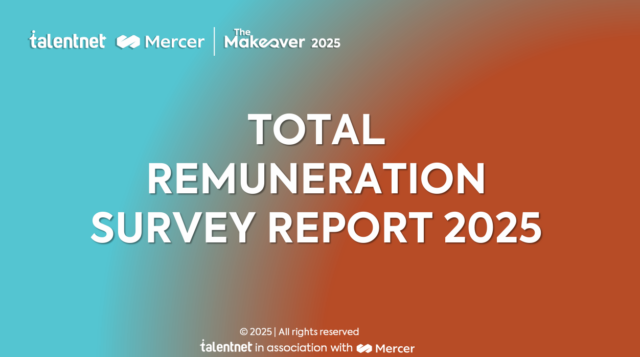How to Design an Employee Benefits Program in Vietnam

May 7, 2025
Last updated on Nov 28, 2025
Decoding the compensation paradox in Vietnamese enterprises and designing an effective employee benefits program has become a major challenge amid increasing pressure to attract and retain talent. Recent data from Reeracoen Vietnam's 2024 Survey shows that 58.7% of workers prioritize comprehensive salary and benefits packages when choosing employers.

Designing a benefits package requires careful planning and strategic consideration of both regulatory requirements and market dynamics. This guide examines the key factors in designing a competitive benefits package and provides practical steps for implementation, specifically tailored for businesses operating in Vietnam’s unique market environment.
5 essential factors to consider when designing benefits plans
Successful benefits program design requires careful attention to regulatory requirements, market dynamics, and organizational capabilities. Companies operating in Vietnam must address five critical factors to ensure their programs meet statutory obligations while delivering value to both employees and the organization.
Legal compliance
The Labor Code 2019 and Social Insurance Law 2014 establish mandatory requirements for all employers in Vietnam. Organizations must maintain full compliance with statutory contribution rates: 17.5% for social insurance, 3% for health insurance, and 1% for unemployment insurance. These contributions apply to all eligible employees under labor contracts.
Registration and documentation requirements are equally critical. Companies must register with the Department of Labor, Invalids and Social Affairs and maintain updated records for benefit enrollment, claims, and payments. Regional minimum wage compliance adds another layer of complexity, with rates varying across Vietnam’s four designated zones.
Statutory leave provisions require careful attention, including:
- Annual leave (12 working days minimum)
- Maternity leave (6 months paid leave)
- Public holidays (12 days annually)
- Sick leave and personal leave entitlements
Employee-centric approach
Recent data from WTW’s 2023 Benefits Trends Survey highlights that 60% of employers struggle with talent competition. This challenge demands a strategic approach to benefit design that considers workforce demographics and varying needs across different employee segments.
A successful employee-centric program addresses both immediate and long-term well-being needs. Organizations must consider the diverse requirements of their workforce, from entry-level staff to senior management. Regular assessment of employee satisfaction and benefit utilization patterns helps ensure program effectiveness and relevance.
Market competitiveness
Market alignment requires systematic monitoring of industry standards and competitor offerings. Organizations should conduct annual benchmarking studies to understand current market positions and identify emerging trends. This analysis informs strategic decisions about benefit enhancements or modifications.
Program positioning must balance cost considerations with the need to attract and retain key talent. Companies operating in competitive sectors often find that strategic investment in supplementary benefits yields significant returns in employee attraction and retention.

Cost-effectiveness and sustainability
Financial sustainability demands careful planning and regular review. Organizations should establish clear budget parameters that account for both mandatory and supplementary benefits. Quarterly financial reviews enable timely adjustments to maintain program viability while meeting employee needs.
Cost management extends beyond basic budget allocation. Companies must understand the full financial impact of their benefits program, including administrative costs and resource requirements. This comprehensive view supports informed decision-making about program modifications and enhancements.
Transparent communication
Effective communication forms the backbone of successful benefits programs. Organizations need established policies and procedures documented in both Vietnamese and English when necessary. A formal communication framework ensures consistent information delivery across all organizational levels.
Regular updates about program features and changes maintain employee awareness and engagement. Companies should implement clear procedures for handling benefit inquiries and claims, ensuring employees understand how to access and utilize their benefits effectively.
How to set up benefits for employees
Organizations must follow a systematic approach when establishing employee benefits programs. This process requires careful analysis of workforce needs, market conditions, and regulatory requirements to create effective, compliant benefit structures.
Understanding employee needs
Effective benefits design starts with comprehensive workforce analysis. Organizations should conduct structured surveys to gather data on employee preferences and requirements across different demographic segments. This data collection process must cover both current benefit utilization patterns and emerging needs.
Regular assessment through focus groups and structured interviews provides qualitative insights into benefit preferences. This information helps organizations identify gaps between current offerings and employee expectations, enabling targeted improvements to benefit programs.
Market analysis
Current market data indicates strong employee focus on comprehensive benefits packages. Reeracoen Vietnam’s 2024 Survey reports that 58.7% of Vietnamese workers prioritize total compensation packages when evaluating employment opportunities.
Market analysis requires examination of three key areas:
- Industry standards and benchmarks for similar organizations
- Regional variations in benefit offerings across Vietnam
- Competitor benefit structures within target talent markets
Organizations must also monitor emerging benefit trends, particularly in areas such as flexible working arrangements and wellness programs. This analysis supports strategic decisions about benefit enhancements that maintain market competitiveness.

Mandatory benefits foundation
The Labor Code 2019 establishes core benefit requirements for all employers in Vietnam. Social insurance contributions form the foundation of mandatory benefits, with specific rates prescribed by law. Employer obligations include social insurance (17.5%), health insurance (3%), and unemployment insurance (1%) contributions.
Leave entitlements constitute another crucial component of mandatory benefits. Vietnamese law mandates minimum provisions for various types of leave:
- Annual leave: 12 working days minimum (with additional days based on service length)
- Maternity leave: 6 months paid
- Paternity leave: 5-14 days (depending on specific circumstances)
- Public holidays: 12 days annually
- Parental leave: 15-20 days per year
Supplementary benefits
Organizations typically extend their benefits programs beyond mandatory requirements to enhance market competitiveness. These additional benefits require careful structuring to align with organizational objectives and employee needs.
Health and wellness programs represent a significant component of supplementary benefits. Many organizations implement comprehensive health insurance coverage beyond statutory requirements. These programs often include annual health examinations, specialist care coverage, and hospitalization benefits. Wellness initiatives may extend to fitness facility access and mental health support services.
Financial benefits serve as key differentiators in total compensation packages. Standard components include:
- Performance-based bonus structures
- Transportation and housing allowances
- Meal subsidies
- Annual leave allowances beyond statutory requirements
Career development benefits support long-term employee growth while strengthening organizational capabilities. Organizations should establish clear policies for educational assistance and professional certification support. These programs require defined eligibility criteria and service commitments to ensure return on investment.
Documentation and process development
Effective benefits administration requires comprehensive documentation and standardized procedures. Organizations must maintain detailed policy manuals covering all benefit components, eligibility criteria, and administrative procedures. These documents should specify:
- Enrollment procedures with clear timelines and requirements
- Claims processing protocols and service standards
- Appeal mechanisms for disputed claims
- Regular review schedules for policy updates
Policy documentation must comply with regulatory requirements while remaining accessible to employees. Organizations should maintain both Vietnamese and English versions of key documents to ensure clear communication across all employee segments.
Communication framework
A structured communication approach ensures employees understand and utilize available benefits effectively. Initial orientation sessions provide foundational knowledge, while regular updates maintain awareness of program features and changes. Digital platforms offer efficient channels for benefit information distribution and updates.
Organizations should establish feedback mechanisms to assess program effectiveness. Regular surveys provide quantitative data on benefit utilization and satisfaction, while informal channels capture qualitative feedback on program improvements. This dual approach enables responsive program management aligned with employee needs.
The communication strategy must address varying information needs across employee segments. Technical staff may require detailed explanations of insurance coverage, while management-level employees might focus on long-term benefits such as retirement planning. Tailored communication approaches ensure relevant information reaches each employee segment effectively.
A well-designed employee benefits program serves as a fundamental business asset in Vietnam’s competitive labor market. Organizations must balance regulatory compliance with Labor Code 2019 and Social Insurance Law requirements while maintaining financial sustainability. Regular assessment of program effectiveness through utilization data enables necessary adjustments to maintain market competitiveness.
Success requires strict attention to both mandatory and supplementary benefits structured according to organizational objectives and workforce needs. Business leaders should conduct quarterly reviews of their benefits structure and seek guidance from authorized agencies or professional HR consultants for specific implementation requirements within their organizational context.

Solve your HR problems!
6th Floor, Star Building, 33 Mac Dinh Chi, Saigon Ward, Ho Chi Minh city, Vietnam




